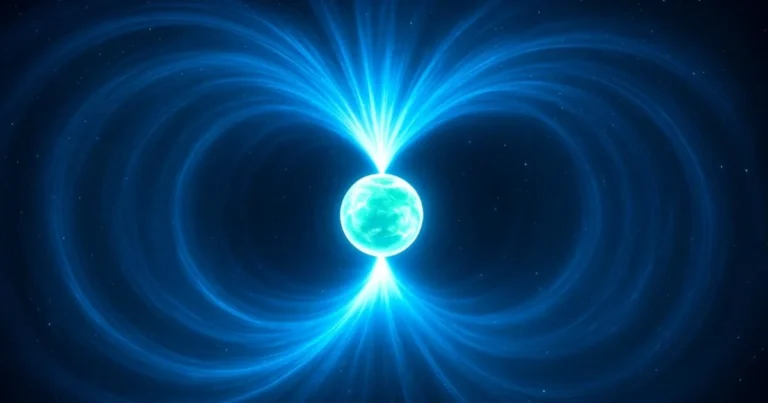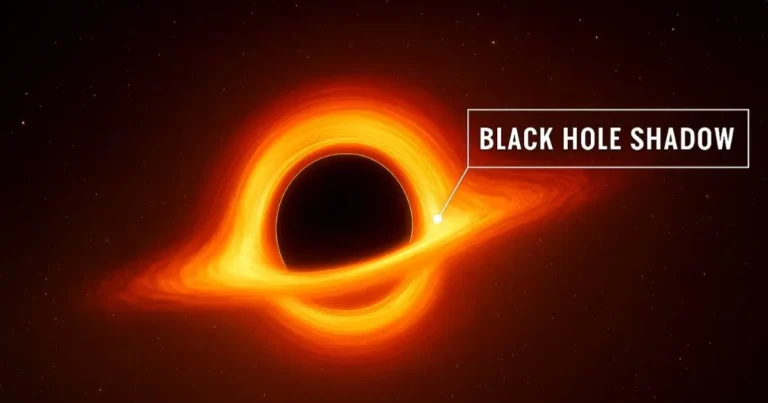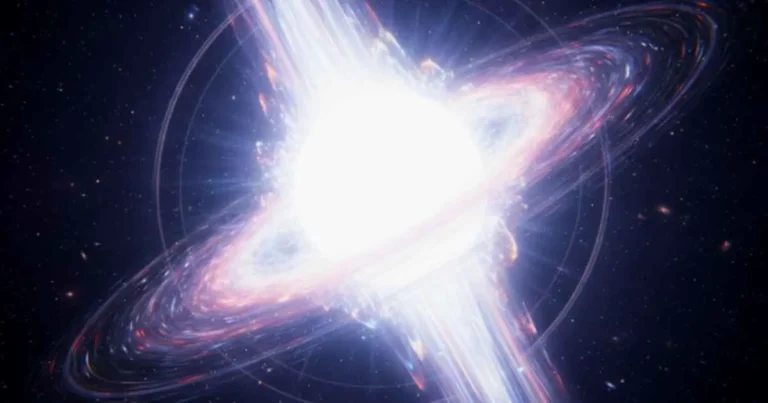The Cognitive Limits of Human Astronomy

Tags:
- AI and Space Science
- Astronomy
- Astrophysics
- Human Cognition
- Time and Space
Ever looked up at the stars at night and wondered—Are we even made to understand all of this? It’s a wild feeling, isn’t it? Billions of galaxies, expanding universes, dark matter, black holes—and here we are with brains evolved to dodge predators and find shelter. No matter how advanced telescopes and AI get, the cognitive limits of human astronomy might be the ultimate limit in finding cosmic reality.
Today, we’re actually going to dive deep into how the wiring of our brain impacts our sense of space, time, and other dimensions. This is not astronomy alone; it’s a great combination of neuroscience and cosmology, where two powerful disciplines come together. Let’s break it down.
What Do We Mean by the Cognitive Limits of Human Astronomy?
Keeping it very short and simple, cognitive constraints are the extent to which the human mind can be stretched while trying to understand the things which are meaningless in our daily life—like higher dimensions or the origin of time itself.
We’re talking about the concepts that don’t quite fit our brains’ evolved way of thinking and perceiving the world. Yes, we can perform math on blackboards, but do we feel or truly comprehend what curved space-time is? Probably not entirely—and that’s exactly the problem.
Key Challenges Are:
- The nature of time as a dimension
- Infinite scales (tiny, like quantum, and gigantic, like cosmic)
- Imaging higher spatial dimensions beyond 3D
- Working with non-Euclidean geometries applied in general relativity.
Even the greatest minds like Einstein, Hawking, Penrose—strike intellectual limits. Why? Because our brainware was not designed to cope with this extent of abstraction.
How the Human Brain Helps Us to Understand the Universe
Our brains are pattern machines
Our brain is a master of finding patterns even where there are none. That’s great if you’re searching for berries—not so great when attempting to interpret confused quantum fields or random cosmic rays.
In astronomy, we dissect the universe into neat charts, two-dimensional representations, or even spheres to accommodate it in our minds in a way that we can comprehend. Reality? The universe doesn’t care about how we would like to perceive it.
Vision Bias
Most of what we understand in astronomy relies on sight and what we can see. But the twist is: we can’t really “see” most of the universe.
- Dark matter? Invisible.
- Black holes? Their effects alone are seen.
- Quantum fields? Forget it.
We translate infrared, radio waves, or gravity information into pretty colorful pictures for public education—but we’re really making representations because our senses can’t handle it raw.
Evolutionary Bottleneck
Why are things such as curved space so difficult? Evolution provided us with just enough intelligence to cope with earthly survival, not multiverse speculation.
Time, Space, and Dimensions: Can We Truly Understand Them?
Time: Linear or Illusion?
We experience time as a linear arrow from yesterday to today to tomorrow. But contemporary physics (and thinkers like Carlo Rovelli) informs us that time may be something different from what we believe we are experiencing. It may be just a convenient illusion of consciousness in a bid to keep things apart.
This creates a dilemma for physicists and cosmologists. Can we possibly ever create accurate models of the universe when one of our foundational concept—time—is just a neurological glitch?
Space: 3 Dimensional or More?
We’re left with height, width, and length—but theoretical physics assures us there are 10 or 11 dimensions (thanks to string theory). How do you even visualize that? — You can’t—not with the human brain alone. Even our advanced simulations are but “shadows” of what those spaces would be.
Dimensions Beyond Our Reach
Higher dimensions might be wrapped up in spaces smaller than atoms. Or perhaps they’re as big as the observable universe—but otherwise completely invisible to us. Either way, we lack the biological tools to deal with that naturally.
Neuroscience Meets Astronomy: What Modern Research Says
This is where it becomes interesting. New discoveries from cognitive neuroscience are starting to reveal just how limited our working memory and abstract reasoning are when we apply them to astrophysics.
Recent Developments (2025): A study by the Max Planck Institute for Human Cognitive and Brain Sciences demonstrated that abstract reasoning tasks involving more than 4 spatial dimensions consistently overload neural processing in over 90% of participants—including those with advanced physics training.
What’s wild? Even physicists admit that they calculate higher dimensions—they don’t intuitively “feel” them.
How Technology Helps Us Push Beyond Cognitive Limits
Fortunately enough, we have created computers to think where we cannot.
- AI algorithms: Trained on massive cosmic datasets to identify patterns we can’t see.
- Machine Learning in Astronomy (MLA): Assisting in discovering exoplanets, charting dark matter, and more.
- Simulations: Supercomputers construct predictive models of the universe that are far beyond what we could ever have in our minds at any one time.
Even so, however, the models themselves must be translated back into language we can understand, which is another potential loss in translation.
Can We Transcend Limits—or Are They Inevitable?
This is the million-dollar question. Now we are building the tools like brain-computer interfaces (BCIs) and higher-dimensional visualizations that may one day allow us to think in higher dimensions or intuitively understand abstract shapes.
But there’s a philosophical twist too:
Maybe we don’t need to fully “understand “—just make good-enough predictions so that we can explore and survive. Evolution might prefer good models to total understanding.
At Stellar Illusion, we love asking these kinds of questions—not just about stars and galaxies but about our own limitations as cosmic explorers. If this fascinates you, don’t miss our other deep dives into cosmic mysteries, like
- Intergalactic Magnetic Fields: 7 Powerful Secrets Hidden in the Cosmic Web and
- Unlocking the Secrets of Alien Astroengineering in 2025.
Explore how invisible forces and potential alien technologies shape the universe we’re just beginning to understand.
Final Thought: Are We Hitting the Edge—or Just the Beginning?
Standing on Earth, staring into the void, you can’t help but ask yourself: Are we approaching the boundaries of what the human mind can understand… or entering a new way of thinking?
For now, the cognitive limits of human astronomy stand as both a challenge and an invitation. Maybe the next revolution won’t be a bigger telescope, but a smarter brain—or at least smarter partnerships between human brains and artificial intelligence.
If you’ve ever felt that mix of awe and frustration when thinking about space, welcome to the club. Keep asking. Keep wondering. That’s how we break limits.
Let me know below—what cosmic idea just refuses to fit inside your head? Explore more cosmic mysteries at Stellar Illusion, where astronomy meets imagination.
Comments
Please log in to leave a comment.
Related Posts

Magnetar: The Universe’s Most Extreme Magnetic Monster
Magnetars are ultra-magnetic neutron stars, cosmic beasts that emit bursts of radiation so powerful they can shake entire galaxies. Learn how they form, what makes them unique, and why their mystery continues to fascinate astronomers.

What Is a Black Hole Shadow? The Ultimate Glimpse into the Abyss
If you could stare into the heart of a galaxy, past the light, past the stars, and into pure darkness, what would you actually see? When astronomers talk about the black hole shadow, they’re referring to one of the most mind-bending sights in the universe, the silhouette of the unseeable, the faint outline of where […]

White Holes: The Universe’s Reverse Gear
If we were to rank the theories that have changed human history forever, the General Theory of Relativity would be at the top. The results it reveals are beyond human understanding. They show that the cosmos is filled with perplexing phenomena, some of which are purely hypothetical yet mathematically elegant. One such phenomenon is the […]